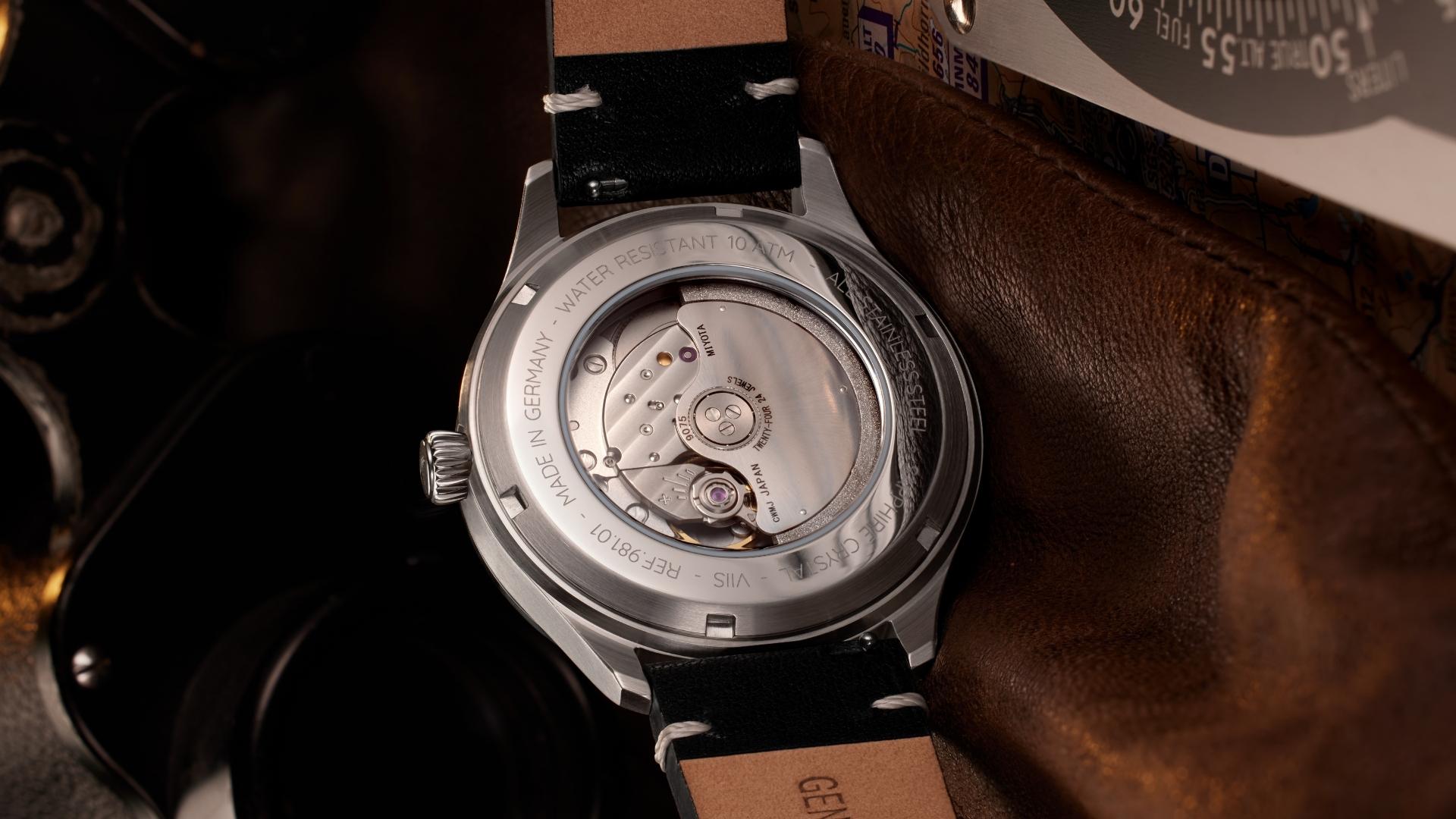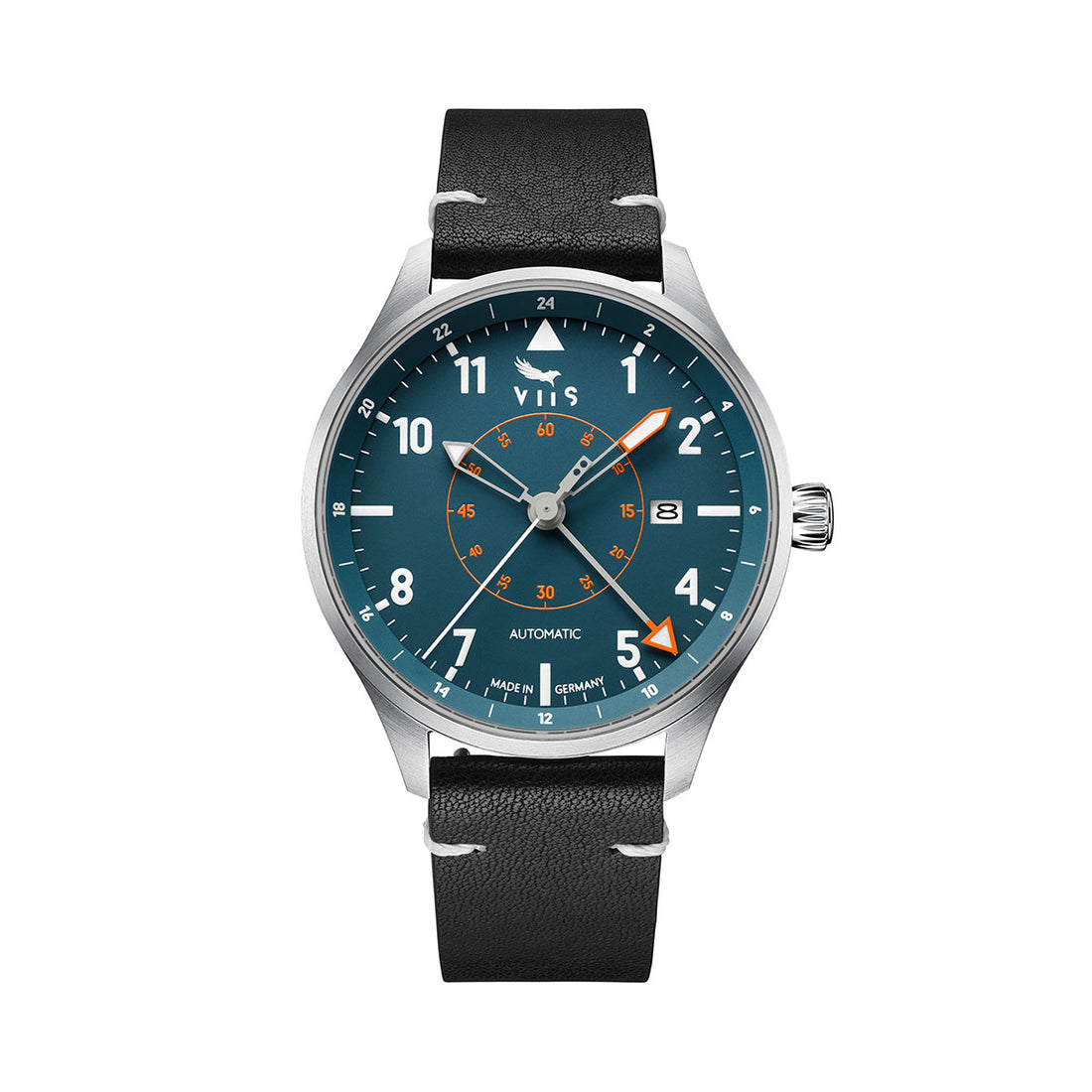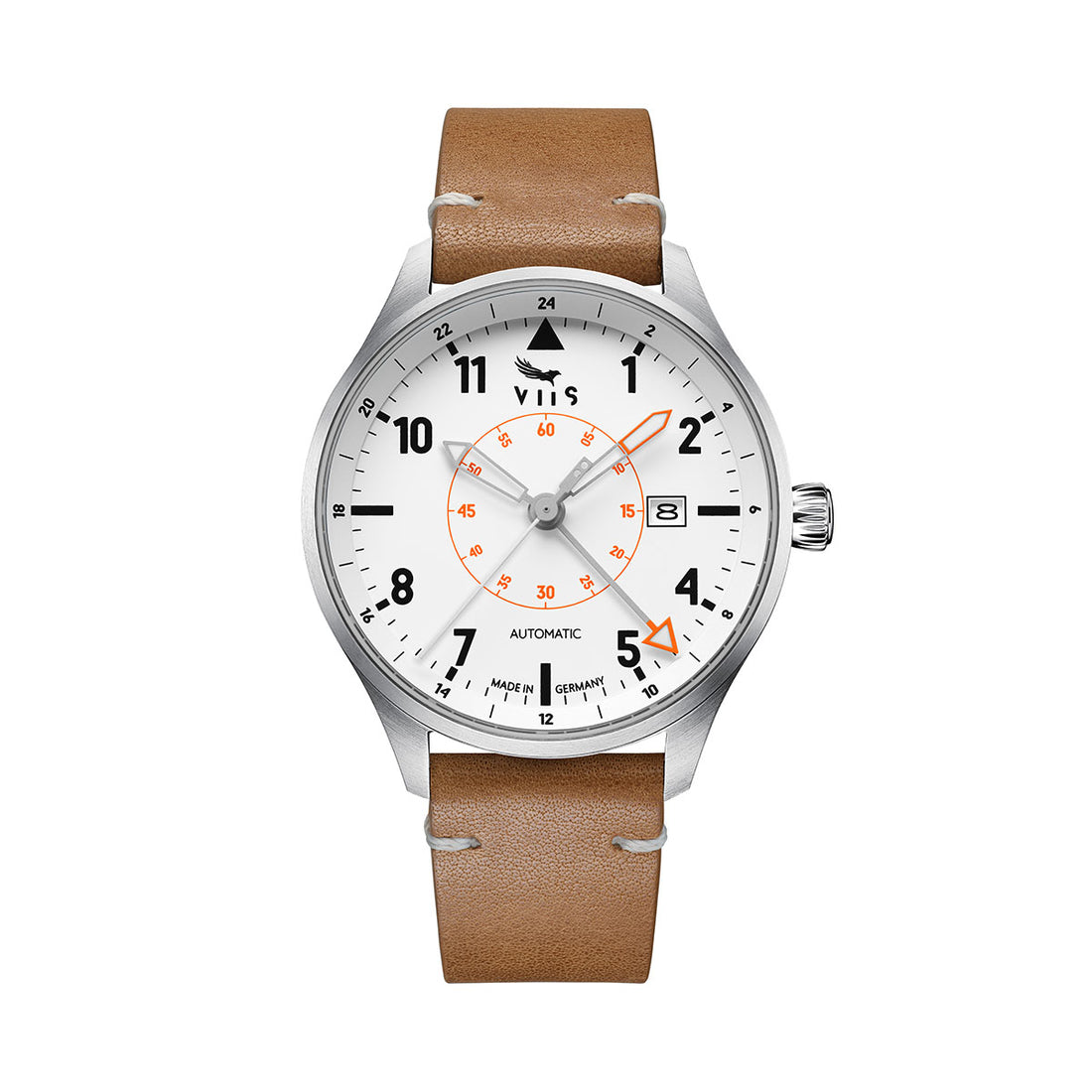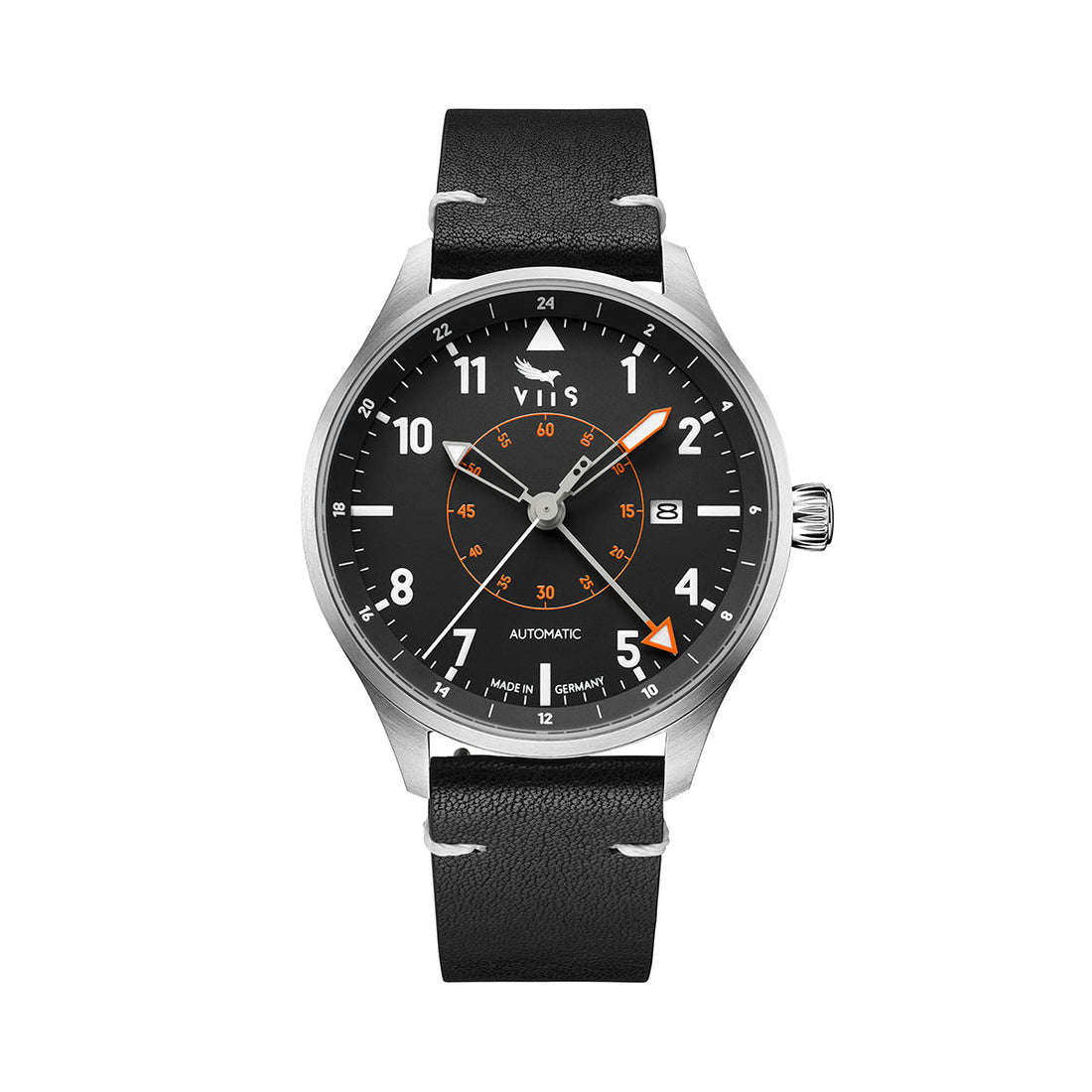For centuries, mechanical watches have enchanted people with their precision and elegance - right up to the present day! Despite the rise of battery-operated quartz watches and digital timepieces, mechanical watches, whether hand-wound or automatic, remain the pinnacle of the watch world. And rightly so: they are masterpieces that embody the fascination of traditional craftsmanship. In this blog article, we dive into the world of mechanical movements, distinguish them from quartz watches, and compare automatic and hand-wound timepieces. We explore the advantages and disadvantages of both systems and how they represent the art of watchmaking.
Quartz movement or automatic movement: what is the difference?
In the world of watches, there are two main categories of movements: mechanical movements and quartz movements. Both categories have one thing in common - they are kept running in different ways: with a battery vs. with kinetic energy.
Everyone knows it: the unmistakable ticking of a clock every second. This is typical of battery-operated quartz clocks. A battery supplies the movement with electrical power, which is passed on to the gears via a quartz crystal. This makes the movement run. However, to save the energy in the battery, the hand only ticks once per second. This is different with a mechanical movement. Here, the energy is stored by winding the mainspring and gradually released to get the movement running. Regardless of whether it is self-winding or hand-wound: the second hand ticks significantly faster (6 to 10 x per second) - almost as if it were gliding smoothly over the dial.
While the cheaper quartz movements impress with their precision, mechanical watches are valued for the complex craftsmanship that lies behind the dial. In the following, we would like to explain to you exactly how the precision mechanics of timekeeping work and how mechanical watches are kept running.
The mechanical watch: An insight into the technology and tradition of watchmaking
The heart of a mechanical watch is the movement. The movement is housed in a case and covered by a dial with hands that show the time. It consists of a series of components that are connected to each other to move the hands on the dial in a circle. The 3 main components are:
- Mainspring
- Gear train
- Escapement
If the mainspring is wound, it can store the energy for the movement. The energy stored in the mainspring is slowly transferred to the gear train so that the hands of the clock can move in circles on the dial. The hands move. To ensure that the mainspring does not release its energy as suddenly as a toy car that is pulled backwards and then released again, there is what is called an "escapement" in the movement. The escapement system, an interaction between the lever and the balance wheel, controls the gradual release of power. This regulation of the energy flow ensures that the clock runs with high precision. It powers the movement for a certain period, allowing the hands to complete their rotations.
Mechanical watches all work in the same way, only where the movement gets its energy from differs. Accordingly, there are hand-wound watches and automatic watches - both subcategories of mechanical watches.
The classic: mechanical watch with hand winding
Mechanical watches with hand winding must be manually wound by the wearer. This is done by turning the crown on the watch case, which engages a series of gears. These gears transfer energy from the crown to the mainspring, tensioning it. As the mainspring gradually unwinds, it powers the movement. Depending on how fully the watch is wound, it can run for several hours or even days
Advantages of hand-wound watches
Disadvantages of hand-wound watches:
The innovation: automatic watch with self-winding mechanism
Mechanical watches with self-winding (also called automatic winding) do not need to be manually wound using the crown. Instead, they harness the wearer's wrist movements to wind the mainspring. These so-called automatic watches feature an additional weight within the movement—the winding rotor—which moves in response to motion and transfers the generated energy to the mainspring.
Gravity acts as a flywheel, pulling the rotor downward. The kinetic energy is then transmitted to the mainspring through a gear train, gradually tightening it and storing energy as a power reserve.
Have you ever taken a look at the display case back of your VIIS watch? There, you can see the rotor rotating as you move your wrist, winding the gears of your watch.
Power reserve: What is it actually?
 just without
just without
Advantages of automatic watches
+ Regular wear provides comfort: Through regular wear and the resulting kinetic energy, automatic watches wind themselves and run continuously
+ Durability and low maintenance: Automatic watches are sustainable and require little maintenance when worn regularly
+ Fascinating technology: smooth second hand and technical sophistication - automatic movements are a sign of advanced watchmaking and quality. They offer a very special emotionality
Disadvantages of automatic watches
- Larger case: due to the rotor and the more complex mechanism, automatic watches can be slightly less slim than comparable hand-wound or quartz watches
- Less precision than quartz watches: although modern automatic watches are often very accurate, they can vary by a few seconds per day depending on the movement and regulation
Conclusion: Sustainable craftsmanship with emotional value
Whether hand-wound or automatic, both types of mechanical watches captivate with their precise mechanics and absence of electronics, representing the high art of watchmaking. While quartz watches appeal due to their affordability, watch enthusiasts appreciate mechanical timepieces for their intricate technology and historical charm. Hand-wound watches create a special emotional connection through daily winding but require more effort. Automatic watches, on the other hand, wind themselves through wrist movement, offering greater convenience.
What both types of watches have in common: They are masterpieces of watchmaking that retain their value and reflect tradition and innovation in the world of timekeeping. If you appreciate the fascinating mechanics and emotionality of automatic watches as much as we do, then the VIIS Flieger GMT 42 is just right for you. Equipped with the renowned Miyota 9075 premium movement, the watch not only offers the convenience of self-winding, but also a high level of accuracy. With a power reserve of approximately 42 hours and an additional GMT function, it is an useful accessory for frequent travelers.
Would you like to admire your automatic movement through the transparent case back and watch as the second hand glides smoothly across the dial? Let yourself be captivated by the charm of our automatic watch and secure a piece of timeless elegance today!





